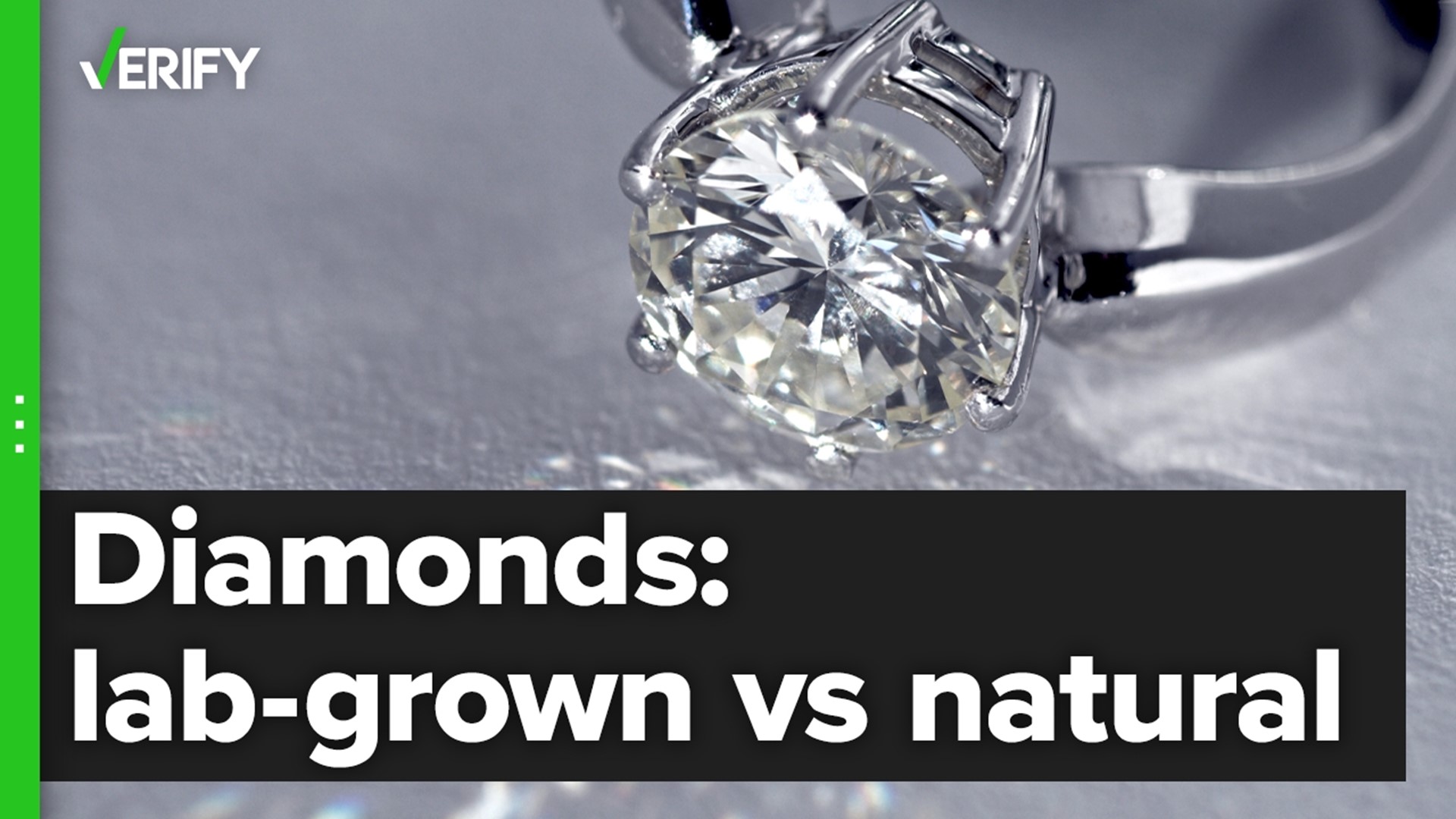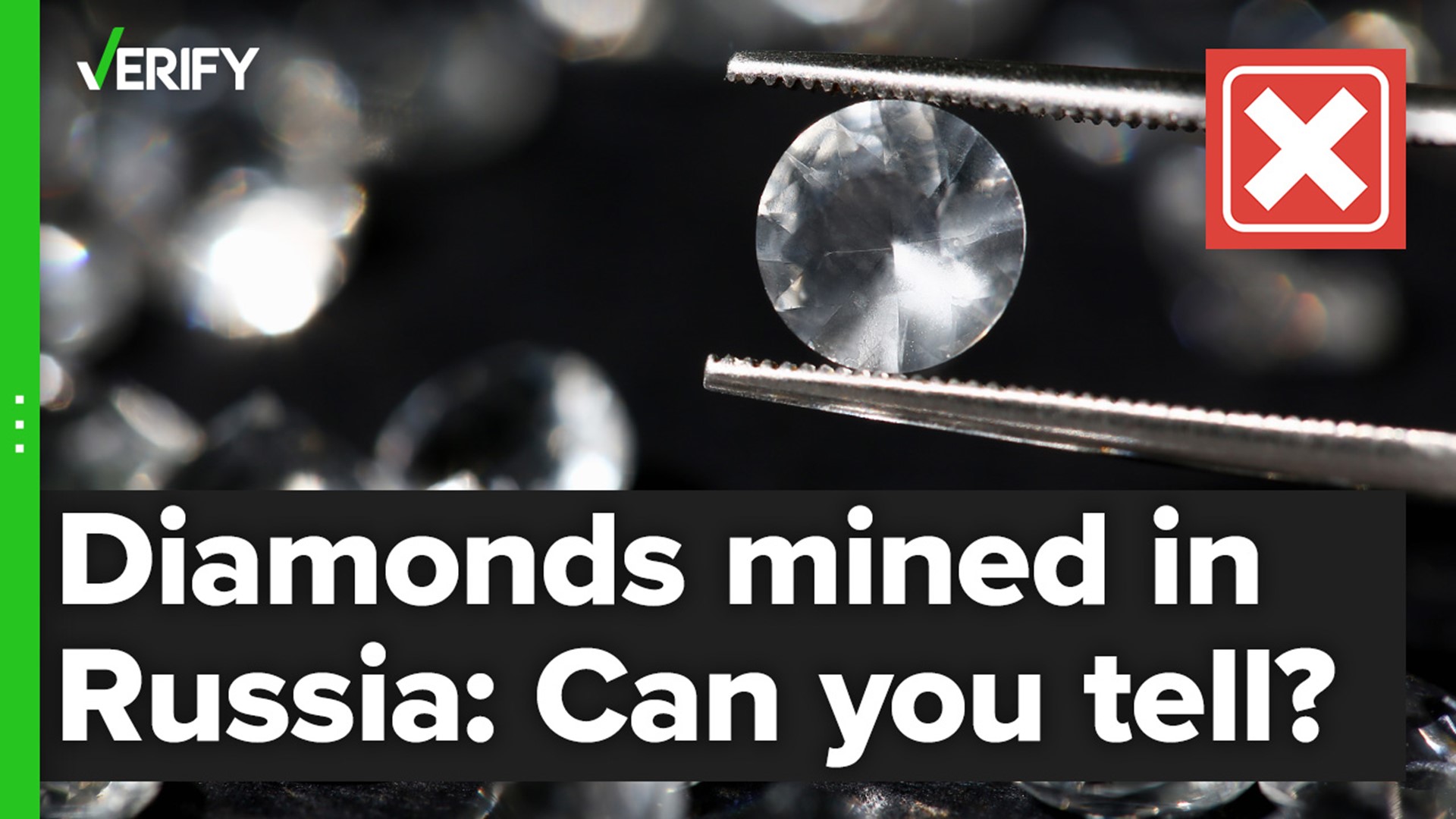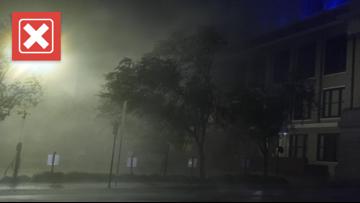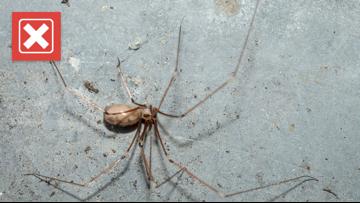Many people in the past turned to cubic zirconia or moissanite to get jewelry that looks similar to a natural diamond at a lower price. But in the last few years, the cost of laboratory-grown diamonds has decreased significantly, according to the International Gem Society, making them one of the most popular alternatives to natural diamonds.
VERIFY viewer Mary sent us an email asking if there is a way to tell the difference between lab-grown and natural diamonds.
THE QUESTION
Is there a way to tell the difference between lab-grown and natural diamonds?
THE SOURCES
- Gemological Institute of America (GIA)
- International Gem Society (IGS)
- Federal Trade Commission (FTC)
- ALTR, lab-grown diamond maker
- Mike Fried, diamond industry expert and CEO of The Diamond Pro
- James Shigley, Ph.D., distinguished research fellow at the Gemological Institute of America (GIA)
THE ANSWER
Yes, there is a way to tell the difference between lab-grown and natural diamonds. But it’s nearly impossible to see with the naked eye.
WHAT WE FOUND
Natural diamonds are formed under high temperature and pressure conditions that exist about 100 miles beneath the earth’s surface, according to the Gemological Institute of America (GIA), a nonprofit institute dedicated to research and education in the field of gemology and the jewelry arts. Lab-grown diamonds, on the other hand, are created relatively quickly in a laboratory or a factory, but share nearly all of the same characteristics as natural diamonds.
“Lab-grown diamonds have the same chemical composition and really the same physical properties as natural diamonds,” explained James Shigley, a distinguished research fellow at GIA.
Diamond industry expert Mike Fried told VERIFY it is nearly impossible to tell the difference between a natural diamond and a lab-grown diamond with the naked eye. But Fried and Shigley say specialized tools, such as this gem testing device that uses fluorescence spectroscopy rather than UV light, can help reputable jewelers at large jewelry companies and trained gemologists tell the two apart.
“All diamonds are pretty much the same, but there are some very minute differences that you can't see with the eye,” said Fried. “It would require sophisticated equipment in a laboratory to detect the difference between the two.”
Jewelers without access to reliable detection technology can also send the diamonds to a gemological laboratory for verification. Shigley says the GIA also has a special report service in which a manufacturer or a jeweler can send in a parcel or a package of natural or lab-grown diamonds that can be tested in-house by GIA gemologists.
“We will go through them and separate out the ones that are natural and the ones that are lab-grown, and we return them separately so you know what you’re dealing with,” Shigley explained.
So how can you tell if you’re buying a natural or lab-grown diamond?
The Federal Trade Commission (FTC) requires that any gem material produced in a laboratory be described in a way that “leaves no doubt that it was not produced naturally,” according to the GIA. Lab-grown diamond manufacturer ALTR also says the “industry is bound by law and ethics to disclose whether a diamond is lab-grown or earth-mined” on its website.
More from VERIFY: Why it’s hard to tell if a diamond was mined in Russia













